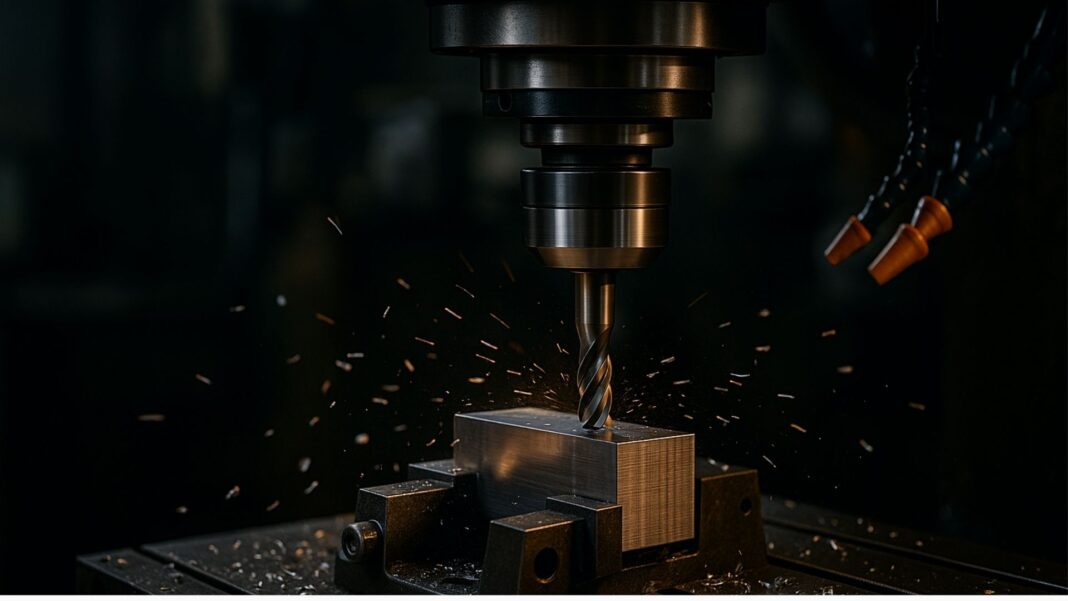There’s no doubt CNC milling machining has changed a lot of things in the industry and made things a lot faster.
But, just like pros, there are some disadvantages as well, which you must know.
The Pros: Why CNC Has Become a Manufacturing Staple
Let’s see some of the pros to begin with.
1. Precision You Can Count On
One of the main reasons manufacturers rely on CNC is that it can produce even the smallest parts in the most accurate way possible. The machine can also produce it any number of times as required.
Once a design is programmed into the system, the machine follows those instructions down to the finest detail. We’re talking tolerances as tight as a few microns, something nearly impossible to achieve consistently by hand.
This accurate level of precision machining is critical in industries where even the smallest mistake could lead to part failure. Think of aeroplane engines, medical implants, or high-performance car components, they all rely on the consistency CNC offers.
2. Repeatability Saves Time (and Sanity)
Manual machining requires skilled operators, and they also need a lot of work. But with CNC, once the program is set and the machine is calibrated, it can run the same job repeatedly without deviation. This is a game-changer for bulk orders or any part that needs to be made consistently across batches.
It can create the 100th part of the machine exactly like the 1st. So, you can use it for bulk production with accurate results.
3. Complex Shapes Made Simple
CNC machines excel at creating complex geometries that would be a nightmare to produce manually. With multi-axis movement, CNC can carve, drill, and cut curves, angles, and intricate patterns in ways traditional tools simply can’t match.
Whether it’s a turbine blade or a custom gear housing, CNC allows designers more freedom to get creative without worrying about how difficult something is to machine.
4. Safer and Cleaner Work Environment
CNC machines are enclosed, automated, and typically require less hands-on interaction once a job is running. This reduces the risk of machine injury from sharp tools, flying debris, or operator error.
While safety protocols are still very much important, CNC setups usually offer a cleaner and more controlled workspace, especially compared to manual lathes or mills.
5. Faster Turnaround with Less Downtime
With the right setup and tooling, CNC can significantly reduce production time. Speeds and feeds can be optimised for the material and design, and tool changes happen automatically. Once operators get comfortable with the software and setup, a lot of time can be saved on jobs that would otherwise drag on for days.
The Cons: What You Need to Consider Before Committing
Here are some of the disadvantages you should know before moving forward.
1. High Upfront Costs
One of the biggest drawbacks of CNC is the initial investment. The machines themselves aren’t cheap, and neither is the software, tooling, or setup needed to run them. On top of that, training operators to use the equipment properly takes time and resources.
This makes CNC a better fit for companies that plan to produce in volume or take on complex jobs regularly. For one-off parts or smaller operations, the cost might not justify the gain.
2. Less Flexibility for One-Time or Custom Jobs
CNC is great for repeatability, but it requires time to program and set up the job correctly. For single-run parts or frequent design changes, this setup time can eat into any time saved during machining.
In cases where only a handful of parts are needed, or the design is likely to change midway, manual machining or rapid prototyping methods might be more efficient.
That’s how it has a bit less flexibility. Also, you still need to program.
3. Programming Is a Skill of Its Own
Running a CNC machine isn’t as simple as pressing a button. Operators need to know how to read blueprints, understand G-code, and use CAM (Computer-Aided Manufacturing) software. They also need a strong grasp of machining principles, materials, and tool selection.
These are some important skills, and some are even hard to find.
4. Limited by Machine Size and Axis Capabilities
Although CNC machines have many axes and come in multiple sizes, there are still various limitations when it comes to building objects.
It increases the overall spend if you are a small business trying to build multiple such objects.
When are CNC Machines Highly Useful?
CNC machines are best in situations where accuracy, consistency, and complexity are non-negotiable. Industries like aerospace, defence, automotive, or medical are some of the places where CNC is used.
It’s where tolerances are tight and parts must be perfect; CNC is often the only viable option.
It’s also a smart choice when producing large batches or parts that will be ordered regularly. Overall, it’s a great investment for most businesses.
Final Thoughts
CNC machines are great and can be used in multiple industries where reputation is of utmost importance. However, you still need to go with some of the best-ever programming skills. There are also CNC machining services that do the work for you. As the work is done by experts, you can sit back and relax.



